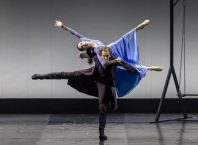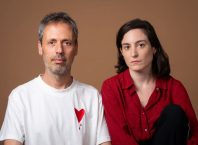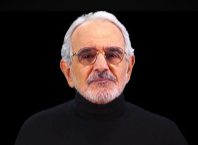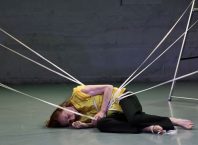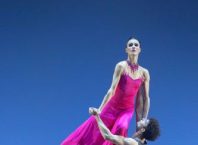A handwritten invitation on cream colored paper, Jiří Kylián and Michael Schumacher’s “Last Touch First” moves through the fabric of time, unfolding a tale of passion contained, blood surging under the skin. A window hangs in mid-air and a doorway frames the dark, creating the impression of a room. The stage is covered with an abundance of fabric, and furnishings that indicate a parlor: upholstered chairs, a table, a flickering candle. Women in flowing dresses and upswept hair, the three piece suits and elegant moustache of the men evoking a distant era, it is a vision of tension and elegance, a silent film in slow motion.
Watching the dance reminded me of the carefully preserved rooms of stately homes, where life itself has long since departed and only the furnishings remain – a memento mori. Looking at faded photographs of the former owners, one imagines them moving through the room, adjusting a tablecloth, drinking wine, playing a game of cards. One might also lift the veil of time, like the hem of a skirt, to reveal the life underneath: desire, turmoil, fear and loneliness.
“Last Touch First” is reminiscent of 19th century art form somewhere between the photograph and the stage, the tableau vivant –literally: a living picture in which the costumed participants, posed without speaking or moving, represent a painting, mood, or, in a series of tableaux, a theatrical narrative. Both an amateur social activity in the drawing room and a theatrical form of entertainment, it was also a medium for erotic expression on the British stage of the 19th century as censorship forbade actresses to move while nude. The theatrical pose with its erotic undercurrent found its expression in photography in the works of photographers such as Oscar Gustave Rejlander, and the more popularly known Charles Lutwidge Dodgson (Lewis Carroll) in the 19th century and by contemporary photographers such as Roger Ballen and Cindy Sherman.
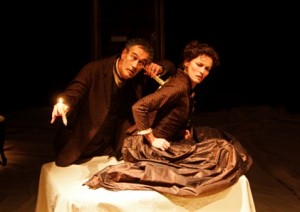
Erotic in its relationship to time, the eye lingers on the eternal unfolding movement, eroticizing the gaze itself. The work reveals all that a photograph conceals: the continuous moment before and after the click of the shutter. The dancers freeze in poses, at times the dancers as “caught” in poses in which decorum and appearances are awry, emphasizing the illusion created by images. The stylized manner of movement places the focus on observation itself, how we appear and how we wish to appear to others, the distance between the images we present and who we are. Even the audience is not spared the ironic scrutiny, as towards the end, the six dancers in comic timing par excellence, bend sideways and gaze outwards.
The expressive virtuosity of the dancers sustains the intensity of the piece throughout, drawing the viewer into the reverie, with only the chime of a wineglass to remind us: tempus fugit. No matter how slowly we move, each movement, each passing moment moves into the past. From above, the shifting pattern of the fabric on the stage looked like wrinkles on skin, the memory of waves on the sand, all transient things that leave a trace on the mind.
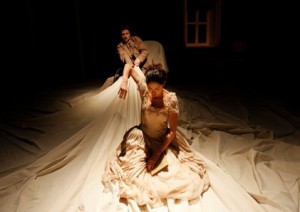
Image credit: Robert Benschop

